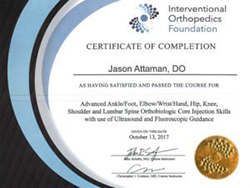Pulsed Radiofrequency Treatment (PRF) for pudendal neuralgia is a type pain relief therapy that has been shown to be effective for nerve pain, known as ‘neuralgia’. A previous blog post titled “Pulsed Radiofrequency Treatment (PRF)” describes this treatment in detail; reading that post prior to this one is highly encouraged for better understanding.
Pudendal Neuralgia
The focus of this post is pudendal neuralgia, or pain caused by the pudendal nerve. The pudendal nerve is a nerve that originates from the sacral plexus, which is a network of nerves located in the pelvis. These nerves exit the sacrum, the large triangular bone at the base of the spine, and descend downward (see diagram at right). This nerve sends signals to the brain regarding sensation and function coming from the vaginal, scrotal, penis, and anal areas. When the nerve becomes entrapped (compressed), damaged, or inflamed, this results in pain. Pudendal neuralgia can occur after certain surgeries or treatments, but it may also occur without a specific provoking factor.
Common Presentation of Symptoms
You can read our blog post about the symptoms of pudendal neuralgia by clicking here. Pudendal neuralgia describes a chronic pain in the genital or anal/rectal areas. This pain is often described as a sharp and/or burning sensation that is made worse by being in the sitting position. Other commonly associated symptoms may include: urinary urgency, urinary hesitancy, and sharp pain around anal or suprapubic areas.
Treatment
As of now, there are no definite treatment guidelines when it comes to pudendal neuralgia. There are a wide range of treatment options, which may include:
• Medication – pain relievers, muscle relaxants
• Pudendal nerve blocks – injecting local anesthetic around pudendal nerve to temporarily block pain signals
• Decompressive surgery – surgery to relieve pressure on pudendal nerve
• Neuromodulation/Spinal Cord Stimulation (SCS) – electrodes implanted over the spinal cord that emit low level electrical pulses to override pain signals coming from pudendal nerve. You can read an interview with Dr. Attaman about SCS for pudendal neuralgia here on the pudendalhope.info website. This is called neuromodulation because this treatment actually seems to make the painful nerves function better, so that they transmit less pain.
Research has shown that a new, promising procedure that falls under the category of neuromodulation is the use of Pulsed Radiofrequency Treatment (PRF) for pudendal neuralgia.
Pulsed Radiofrequency Treatment (PRF) for Pudendal Neuralgia – The Research
The first study to describe Pulsed Radiofrequency Treatment (PRF) as an effective option for pudendal neuralgia was published in 20091. Since then, two different case studies have been performed where individuals underwent PRF for their pudendal neuralgia symptoms23. The results for both studies were very positive.
These new case studies demonstrated the following:
• Safety – no complications and minimal negative side effects with PRF treatment
• Less medication – patients decreased/stopped medication use after the procedure
• Extended pain relief – patients reported significant relief ranging from 5mos – 2yrs
• Patient satisfaction – PRF provided tangible relief from unmanageable pudendal neuralgia
When Do We Use PRF Treatment for Pudendal Neuralgia?
Typically, Pulsed Radiofrequency Treatment (PRF) is offered to patients with pudendal neuralgia that is chronic and difficult to eliminate. For example, if patients have tried medications, physical therapy, conventional pudendal nerve blocks, and these treatments have given some but very short term relieve, we know that we need to employ a more advanced and stronger treatment to treat their pain. This is were PRF treatment comes into the picture. It is a nice option because it actually seems to make the nerve function better (neuromodulation), and it is very minimally invasive.
The Big Picture
In summary, Pulsed Radiofrequency Treatment (PRF) is a strong and appealing option to diagnose AND treat pudendal neuralgia. It has allowed patients to take less medication, experience less pain, and return to living the life they wish to live. Research has shown that this method of treatment is not only highly tolerated with minimal complications, but also an effective way to reduce pain caused by the pudendal nerve.
Talking about pain in general can be hard enough already, but when the pain is located in private regions, it can even become embarrassing. You should not have to feel ashamed or afraid to talk about your symptoms with your doctor. Dr. Attaman welcomes and encourages you to share your story so that he can offer you the best treatment options. His volume of experience and training in the field of neuralgia is coupled with his passion for finding real solutions for his patients.
If your pain symptoms sound similar to those described in this post and you are looking for a treatment that truly works, Pulsed Radiofrequency Treatment (PRF) treatment may be the answer for you.
Research Papers on Pulsed Radiofrequency Treatment (PRF) for Pudendal Neuralgia
1. Rhame, E. E., MD, Levey, K. A., MD, & Gharibo, C. G., MD. (2009, January 07). Successful Treatment of Refractory Pudendal Neuralgia with … Retrieved August 24, 2016, from http://www.painphysicianjournal.com/current/pdf?article=MTIyNQ==&journal=49
↩
2. Ozkan, D., Akkaya, T., Yildiz, S., & Comert, A. (2016). Ultrasound-guided pulsed radiofrequency treatment of the pudendal nerve in chronic pelvic pain. Der Anaesthesist Anaesthesist, 65(2), 134-136. doi:10.1007/s00101-015-0133-4
↩
3. Han, S., Moon, D., Kim, Y., Lee, M., & Sa, G. (2014, October 31). Anesthesia and Pain Medicine. Retrieved August 24, 2016, from http://www.anesth-pain-med.org/journal/view.html?volume=9
↩



I have some question about PRF treatment. I have just a pudendal nerve block. It works for about 8-12 hours. My doctor has recommended a Pulse Radiofrequency Nero Ablation. We I had the nerve block done I was numb for the entire time of pain relief. Is this what will happen with the ablation. Will I lose feeling in certain areas of my body. I also read that they are not recommended for person over a certain weight, is that true? I am trying to find out all I can so I can make an informed decision about my treatment.